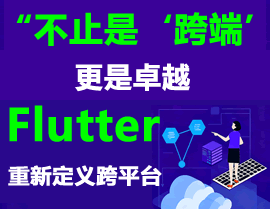Rust UI框架推荐及实现方法
最近在学习Rust开发GUI应用,想请教下目前主流的Rust UI框架有哪些?各有什么优缺点?另外能否分享一些具体的实现案例或入门教程?听说有些框架可以和Web技术结合,这种方案的开发体验如何?希望有经验的朋友能推荐适合初学者的方案,最好能附带简单的代码示例说明基础用法。
2 回复
推荐Druid、egui、Iced。Druid适合桌面应用,egui轻量且适合游戏,Iced跨平台。实现方法:用Cargo创建项目,添加依赖,编写UI组件和事件处理。示例用egui:创建窗口,在update()中绘制按钮并处理点击事件。
推荐几个主流的Rust UI框架及实现方法:
推荐框架
1. Druid
- 特点:数据驱动,专注于桌面应用
- 成熟度:较高,有良好文档
- 适用场景:跨平台桌面应用
use druid::widget::{Button, Label};
use druid::{AppLauncher, LocalizedString, Widget, WindowDesc};
fn main() {
let main_window = WindowDesc::new(ui_builder)
.title("Druid示例");
AppLauncher::with_window(main_window)
.launch("Hello World".to_string())
.expect("启动失败");
}
fn ui_builder() -> impl Widget<String> {
Label::new(|data: &String, _env: &_| data.clone())
}
2. Iced
- 特点:Elm架构,跨平台
- 优势:简单易学,文档完善
- 支持:桌面、web、移动端
use iced::widget::{button, text};
use iced::{Element, Sandbox, Settings};
#[derive(Default)]
struct Counter {
value: i32,
}
#[derive(Debug, Clone, Copy)]
enum Message {
Increment,
}
impl Sandbox for Counter {
type Message = Message;
fn new() -> Self {
Self::default()
}
fn view(&self) -> Element<Message> {
button(text(format!("点击: {}", self.value)))
.on_press(Message::Increment)
.into()
}
fn update(&mut self, message: Message) {
match message {
Message::Increment => {
self.value += 1;
}
}
}
}
fn main() -> iced::Result {
Counter::run(Settings::default())
}
3. Slint
- 特点:声明式UI,性能优秀
- 优势:有自己的DSL,编译时检查
- 适用:嵌入式到桌面应用
slint::slint! {
export component MainWindow inherits Window {
in property <int> counter: 0;
VerticalLayout {
Text { text: "计数: " + counter; }
Button {
text: "+1";
clicked => { counter = counter + 1; }
}
}
}
}
fn main() {
let window = MainWindow::new().unwrap();
window.run().unwrap();
}
4. Egui
- 特点:即时模式,简单直接
- 优势:无状态,易于集成
- 适用:工具应用、游戏UI
use eframe::egui;
struct MyApp {
name: String,
}
impl eframe::App for MyApp {
fn update(&mut self, ctx: &egui::Context, _frame: &mut eframe::Frame) {
egui::CentralPanel::default().show(ctx, |ui| {
ui.heading("Egui示例");
ui.text_edit_singleline(&mut self.name);
ui.label(format!("你好, {}!", self.name));
});
}
}
fn main() {
let options = eframe::NativeOptions::default();
eframe::run_native(
"Egui应用",
options,
Box::new(|_cc| Box::new(MyApp { name: "".to_string() })),
);
}
选择建议
- 初学者:从Iced开始,学习曲线平缓
- 桌面应用:Druid或Slint
- 工具类应用:Egui
- 需要最佳性能:Slint
- 跨平台需求:Iced
实现步骤
- 添加依赖到
Cargo.toml - 定义数据模型
- 实现UI组件
- 处理用户交互
- 运行应用
Rust UI生态仍在发展中,建议根据具体需求选择合适的框架。






